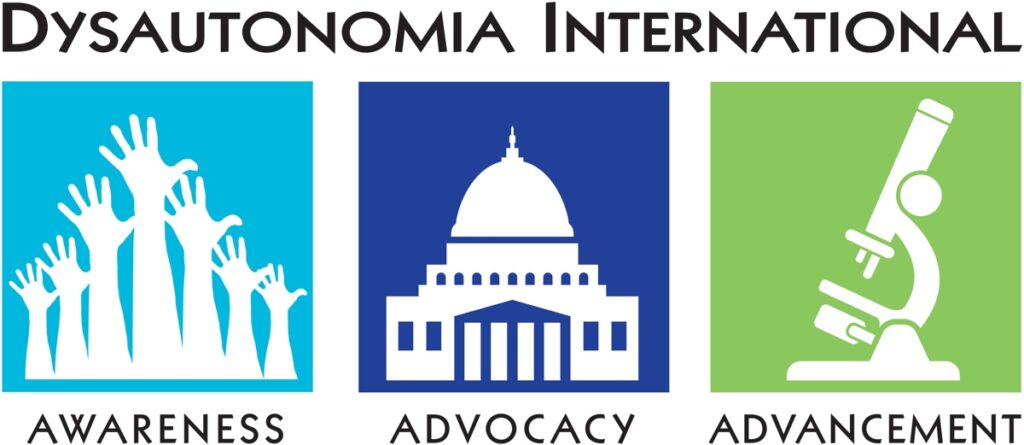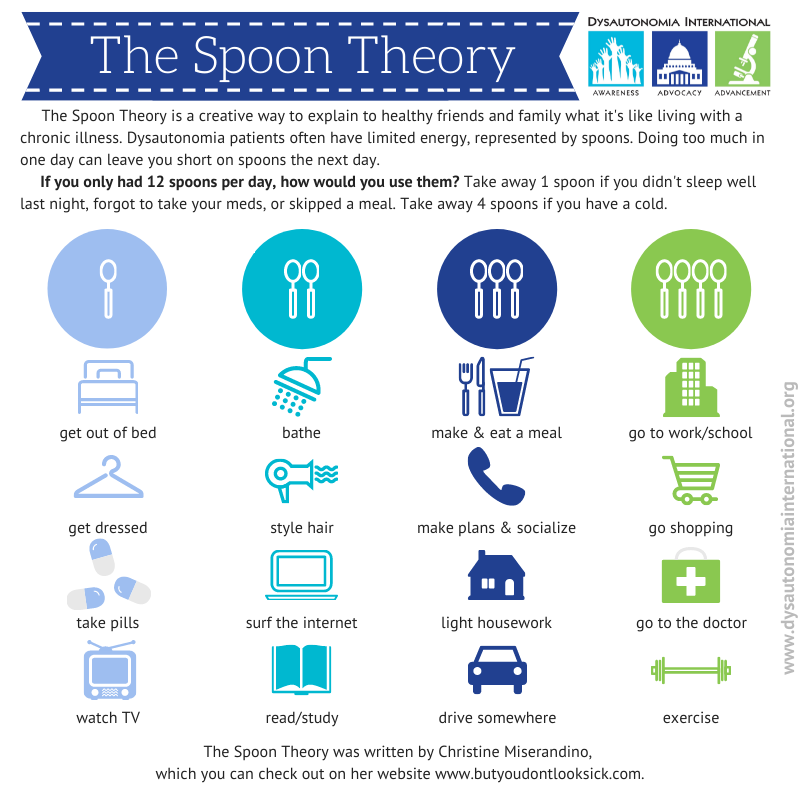Congratulations! You’ve just been diagnosed with dysautonomia, or have symptoms leading you to believe you have it.
I am so, so sorry.
Let’s be real. This sucks.
This is not a club you necessarily want to be a part of, but I promise you, the people in this club are great–and you’ll never have to do this alone.
You’re probably feeling overwhelmed and have no idea on how to get started, so I made a quick roadmap for you. Feel free to take steps out of order, even skip some, but I’ve prepared a general guide for you.
If you’re not new to dysautonomia but you’re looking for some helpful links and tips, check out my resources page.
Step 1 – Visit Dysautonomia International

Spoiler alert: Dysautonomia International is going to be your guide through all of this.
Dysautonomia International was launched in 2012 as one of the very first patient led advocacy groups connecting patients with physicians and researchers to help find a cure for all forms of dysautonomia. In the last decade, they have funded millions of dollars in research grants, hosted 10 conferences (in person and virtual), hosted runs, walks, and 5K’s, created the largest online network of support groups for dysautonomia patients that exists, and is only getting started.

I was one of the first interns for this organization back in 2014 and it completely changed my life. The leaders are passionate, educated, and wholly invested because they or someone close to them has dysautonomia. My life has been a million times better by this organization and the people in it, and I have full faith it will help you on your journey, too.
Step 2 – Join Facebook Support Groups
Find the full listing of Dysautonomia International’s Facebook support groups here — Dysautonomia International has groups in several different countries as well as groups for all 50 U.S. states!
- POTS – this is the largest Facebook group for POTS patients with over 49k patients. Even if you don’t have POTS and just have general dysautonomia, this group is still a fantastic resource. I always utilize the search function of the group before asking a question because so many questions have been asked before and people have shared so much great knowledge.
- College Support Group
- Teen Support Group – I moderate this one!
- LGBTQ+ Support Group
- Black Support Group
- Men’s Support Group
- Spouse and Significant Other Support Group
- POTSibilities Parents (same thing goes, if you’re a parent of a child with a form of non-POTS dysautonomia, you are still very welcome here–this group is excellent and is moderated by one of the most dedicated volunteers I’ve ever met.)
Step 3 – Queue up some videos
The Dysautonomia International Video Library is my favorite resource to share with people. Over the last 10 years, they have been filming videos from conferences, events, and webinars. Nearly all of them can be viewed online for free, and the rest can be viewed online for a small fee.
My all time favorite video is our “What is POTS?” video–if you need a quick explainer for friends and family, share it with them! (And listen closely to try to figure out which part of the voiceover I did.)
In 2021, husband wife team Ashley and Cort Rippentrop released their film Behind the Visible about Ashley’s journey with POTS. They interview some of the top POTS researchers and physicians as well as some of my great friends I’ve met over the years. It’s an incredibly validating film for POTS patients and a phenomenal introduction to the syndrome for friends and family. You can rent or buy it on Vimeo here! (See if you can catch me in the movie for 2 seconds!)
Step 4 – Use the physician finder
To be blatantly honest: finding a doctor to treat dysautonomia is almost as hard as finding a cure itself.
I have two key pieces of advice:
- Use your localized Facebook support groups for recommendations (always search the group before asking for recs, I promise you there will be tons of info, and also maybe even tips/warnings about doctors)
- Use the Dysautonomia International Physician finder
If you are in a position to help host a physician education event (e.g., if you’re connected with a medical school or just know a doctor who’s eager to learn), please reach out to Dysautonomia International to help them in their mission to enable more doctors to effectively treat dysautonomia patients!
Step 5 – Connect with dysautonomia patients everywhere!
Step 6 – Acquaint yourself with The Spoon Theory
Years ago, author Christine Miserandino was at a dinner with friends and was looking for a way to explain having limited energy throughout the day. She grabbed up all of the spoons at the table, handed them to a friend, and would take one spoon for each daily activity, sometimes more depending on the difficulty of the task. Pretty soon, all of the spoons were gone.
After the shared this story online, it became the unofficial story of chronic illness patients. How many spoons will you have today? How many will you have to use on a certain task?
Several years ago, I got to make this graphic for Dysautonomia International that breaks this all down. Since then, it’s been shared across hundreds of websites, published in a scholarly journal, and apparently was even shared with several teams at my job and I didn’t even know it? I share this partially to brag (I’m really proud!) but also just to let you know, it’s really versatile!

Step 7 – Get helpful products
Your MUST haves as a new dysautonomia patient:
- an extremely large water bottle (I’m currently an Owala girl)
- Hydration salts and supplements. My personal favorite is Vitassium — sign up for their club for discounts!) Other great supplements include —
- Cold packs
- Compression stockings
- Headache Hat
- Heating pad
- Portable fan
- Pulse oximeter
- Rechargable hand warmer
- Squatty Potty
- Weighted blanket
Check out my Dysautonomia Gift Guide I share every holiday season for ideas
Step 8 – Check out additional resources
I have assembled a general dysautonomia resources page that has a few of the same links as I have above, but also some extras–like great articles, links to blogs I follow, etc!
*